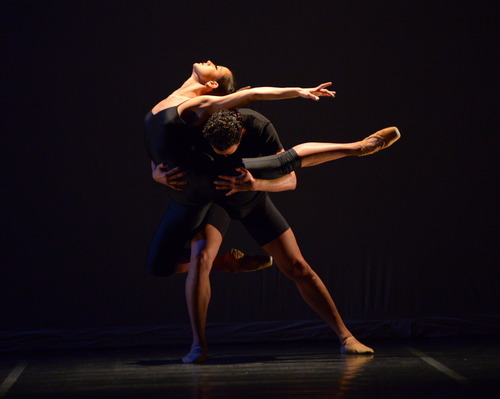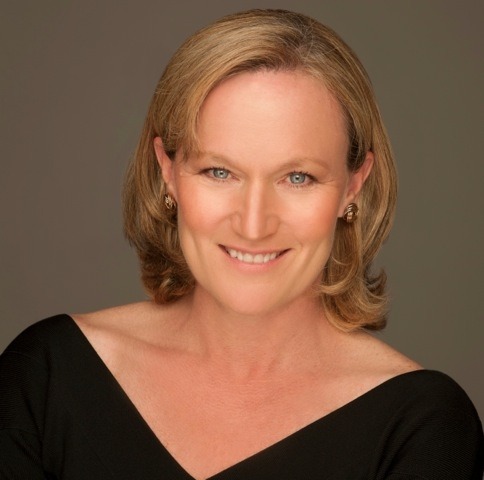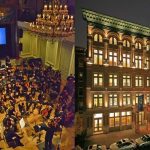Meet a NYFA Artist: Diane Coburn Bruning
Classicism, structure, counterpoints, and collaboration
NYFA talks to Diane Coburn Bruning (AFP ‘98 Choreography; AFP ’02 Choreography) about relaunching her dance company, Chamber Dance Project, their upcoming performance at the Kennedy Center, and her new film project.
NYFA: You founded Chamber Dance Project in New York in 2000, moved to Washington, D.C. about four years ago and have now relaunched the company in D.C with its inaugural Washington season opening at the Kennedy Center Terrace Theater this June. What prompted your relocation from New York to D.C. and what prompted you to start up Chamber Dance Project again?
DCB: A combination of personal and professional opportunities prompted my relocation: it was a good time to leave New York, which was in a very tough state of affairs — especially for the arts — with the recession. In D.C., I was given opportunities to work with the Washington National Opera, as well as with wonderful theatres such as Woolly Mammoth, Shakespeare Theatre Company, Studio Theatre, and Solas Nua. I realized that there was an amazing theatre community here, and it seemed there was a good opportunity for Chamber Dance Project to thrive anew here. We built a board, a string quartet, and an incredible group of dancers excited to come together to create new and powerful work. And the city has embraced us.
NYFA: Your program at the Kennedy Center is called Contemporary Ballet With An Edge. These words are often used to describe your work. I know it’s a big topic, but in a few sentences, how do you see your work both departing from and being inspired by classical ballet?
DCB: I came across a statement I was asked to make about my work when I received a Guggenheim a dozen years ago and it seems to still describe my interests in choreography: While my work is rooted in classicism, it is classicism with which I argue: probing for a twisting of the ballet line, shape and form to wring a beauty of a new temperament. My interest is in a visceral and emotional impact rather than a literal narrative, in questions rather than answers. My commitment is to live music and collaboration with outstanding composers, musicians, dancers, designers, and other artists.

NYFA: This production will feature your male duet, Exit Wounds: and then they came home. Please share a bit about the evolution of this piece.
DCB: A fellowship last year allowed me to create a new work independently with two incredible male dancers, Luis Torres and Andile Ndlovu. We created much of it first in silence with many images I had and they helped me develop the piece. I have come to see this piece as a prayer for peace. I seem unable to suppress this protest in me or, to put it in a positive light, this prayer against the madness of the wars, the many wars, the endless wars, and the impact of these wars beyond the deaths. Exit Wounds seemed to have a profound emotional impact at its premiere in Baltimore, which was gratifying. But I prefer to allow people to respond than to direct or describe what they should look for or feel, so I tend to speak little about what my work means.
NYFA: You will also be premiering a new ensemble dance. What can we expect to see in this performance?
DCB: Yes, a very different side of my work, which was initiated by a love of the music and the dancers I will be creating it with. I love to work with and against the formal structure, counterpoint, and rhythms of Baroque music, and irreverently defy the courtly images the music may conjure with contemporary resonance. I like the purity of a dialogue with the music, which to me means not tagging along with music but having a conversation or even an argument with it. Our musicians play onstage with us for yet another interplay: a visual counterpoint of the musicians and dancers.
NYFA: With Exit Wounds in mind, what are some of the considerations you need to take into account when choreographing a duet vs. a full ensemble piece?
DCB: I have always been fascinated with constructivist and counterpoint elements in dealing with ensembles and the impact of group vs. group vs. group. One of my teachers years ago at Butler, George Verdak, once asked, How many lines of movement can the eye see? This was a good question, and I find myself pushing that idea with layers of counterpoint both spatially and in contrasting movement phrases. I rarely go beyond three at once and feel it has impact. Making the stage rock with argument of the separate groups thrills me. While I like to work a soloist or a duet against a group, I find those relationships are inherently less potent.
NYFA: The program also features a collaboration with the acclaimed Argentinean choreographer, Jorge Amarante, in his first work for an American company. How did this collaboration develop?
DCB: About five years ago, a few of us from Chamber Dance Project toured to Colombia to perform at the International Ballet Festival in Cali. Jorge had an amazing neo-tango piece in the festival with incredible verve, passion, physicality and rhythmic interplay. That was it — I wanted to bring Jorge and his work to Chamber Dance Project and the U.S. It took longer than I had hoped but watch out. He is the real deal. I believe in supporting talent and giving opportunities to those whose works move me.
NYFA: This summer you will be working on a film based on Exit Wounds. Tell us about that project.
DCB: Yes, I get to finally return to film. When given the opportunity to create a dance film at Sundance years ago, I was bitten. My work went in other directions, and only now am I getting back to film. I like the intimacy and immediacy of the medium for dance, and that there is new set of choices for directing the viewer’s eye, which one cannot always do as definitively onstage. The possibility to have a broader audience for Exit Wounds is also very appealing.
NYFA: You were awarded Artists’ Fellowships in 1998 and 2002. How did these awards affect you at those points in your career?
DCB: With the first award, I bought a videocamera! My first! It was liberating to record my work and ideas in the studio. It also reduced paper notes and allowed me to forget what I did without consequence!
With the second award, I studied at Yale on a post-grad fellowship with Jennifer Tipton and Ming Cho Lee. This had a huge impact on my work and my collaboration with designers (with Jennifer’s encouragement, I even did the lighting design for one of my own works — but just one!) My gratitude abounds to NYFA for this support at critical junctures of my career. I am among a myriad of artists in this admiration and appreciation. Thank you.
For more information, please visit Chamber Dance Project. Chamber Dance Project’s inaugural season will be at The Kennedy Center’s Terrace Theater June 26-28.




